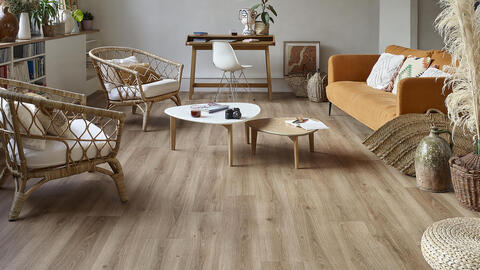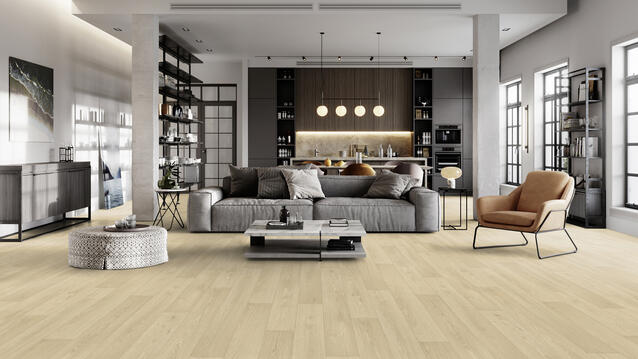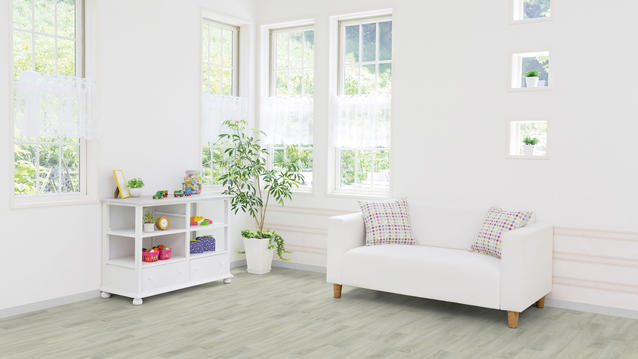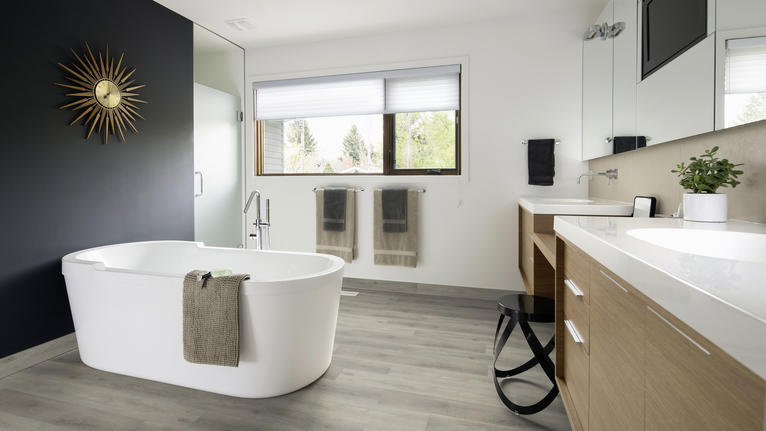
Choosing vinyl floors for a bathroom
Vinyl is a popular choice for bathroom floors for very good reason. Vinyl flooring is composed of several layers of materials sandwiched together to create a durable, practical and affordable floor covering. While it’s best known for its durability, water-resistance and affordability, vinyl flooring is also easy to clean and maintain, easy to install, and it comes in a huge variety of designs and colours. All of these characteristics make vinyl flooring a standout flooring choice for bathrooms.
The two main types of vinyl flooring are luxury vinyl tiles (LVT) and vinyl roll (also known as sheet vinyl flooring). Made from the same materials and sharing similar characteristics, both LVT and vinyl roll are highly suitable bathroom flooring options.
To help you choose a vinyl floor for your bathroom, browse through our LVT and vinyl roll collections. Each collection offers a wide range of design options, which cater to and complement any interior design style. Alternatively, visit our editorial pages for inspiration and ideas based on some of the latest bathroom designs and styles.
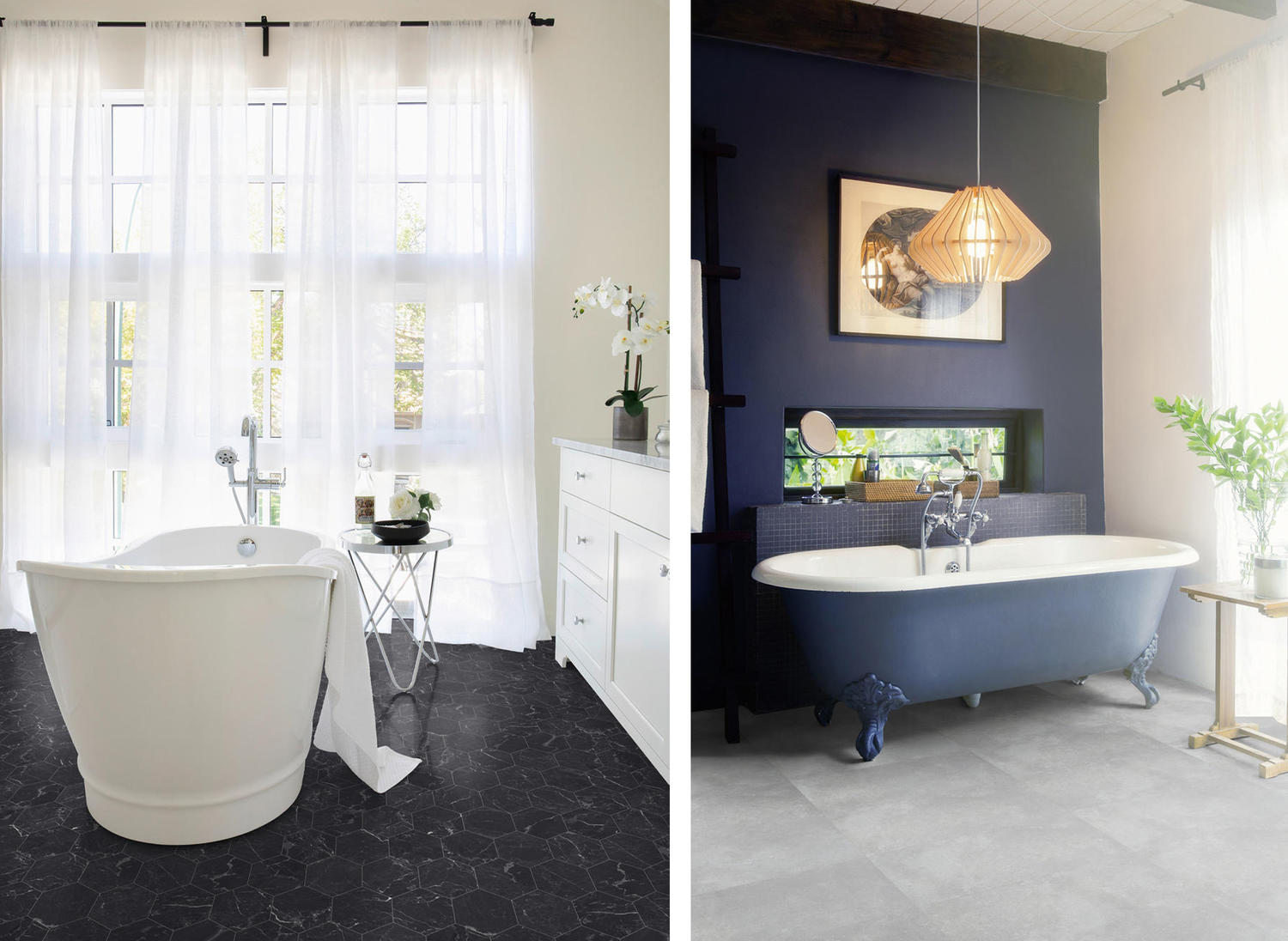
Benefits of vinyl flooring in bathrooms
Vinyl is generally the candidate of choice for bathroom flooring because it offers the perfect mix of practicality, attractiveness and affordability. In fact, the benefits of vinyl flooring in bathrooms are many.
Pros of using vinyl flooring in the bathroom
• Water-resistant
• Very easy to clean
• Comfortable and warm underfoot
• Available with slip-resistant grip
• Easy to install • Affordable
• Available in many designs and colours
Water-resistant – Because it’s made with PVC, vinyl has a natural resistance to water and moisture. In fact, vinyl itself is a waterproof product, but the seams between planks and sheets are not. This means you'll need to be careful when installing vinyl floors in the bathroom to avoid any gaps.
Very easy to clean – Vacuuming or wiping with a damp mop moistened with warm water and a neutral detergent is all that’s needed. Vinyl floors are one of the lowest maintenance floors around.
Comfortable and warm underfoot – Vinyl offers better insulation than ceramic tile giving it a warmer feeling underfoot. It’s also slightly softer than tile or stone, which is a welcome feeling for bare feet on bathroom floors. Available with slip-resistant grip – This feature provides added comfort and safety.
Easy to install – Installation methods vary depending on the vinyl product you choose; however, vinyl is one of the easiest floors to install.
Affordable – Vinyl is relatively inexpensive when compared to alternative bathroom flooring options such as ceramic tile, stone tile and marble.
Available in many designs and colours – The huge range of design options gives you access to almost unlimited styles and provides you with the freedom to create bathroom flooring perfectly matched to your tastes and home decor.
Drawbacks of vinyl flooring in bathrooms
Cons of using vinyl flooring in the bathroom
• Difficult to repair
• Installation of LVT is different than other rooms in the home
Difficult to repair – There are no apparent drawbacks of vinyl flooring in bathrooms. The only issue with vinyl flooring is that it's difficult to repair if it gets damaged. Vinyl is a highly durable material, but if it does get damaged, for example, due to water damage, the floor would need to be ripped out and replaced.
Installation is different to other rooms in the home – When installing LVT flooring in damp rooms such as the bathroom, you need to follow specific instructions. Edge joints in smaller bathrooms (maximum 10 m2), can be made with silicone to avoid any infiltration of water through the expansion joint and into the installed surface. For larger bathrooms, we recommend that you start by applying insulation tape to the area of the joint before filling it with a quantity of silicone and/or using a skirting board with a sealing lip.

